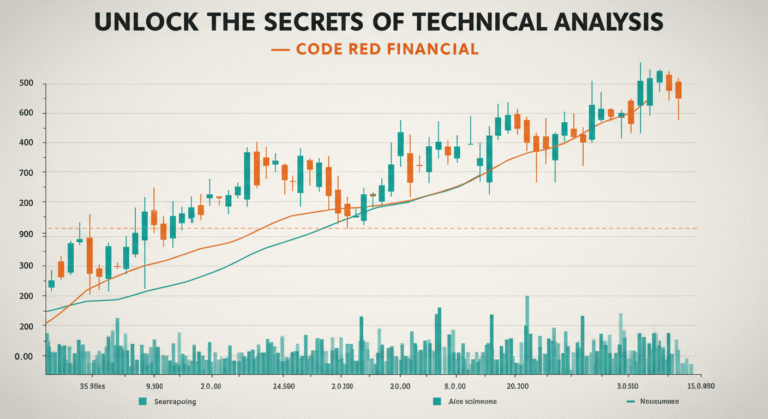
The New Regulatory Framework: Key 2025 Developments
Cryptocurrency continues to evolve at a rapid pace, and with that evolution, the regulatory landscape is changing too. As the digital assets market matures, governments are scrambling to keep up. In 2025, the United States made a significant shift in its crypto policy, particularly through the Trump administration’s Executive Order and several other key regulatory steps. These changes are shaping the future of the crypto industry, offering both opportunities and challenges for businesses, investors, and regulators alike.
Let’s explore these new developments, their implications, and how they’re transforming the cryptocurrency landscape.
1. Federal Deregulation Takes Center Stage
On January 23, 2025, the Trump administration signed an executive order that marks a sharp departure from previous crypto policies. The order represents a significant pivot in how the U.S. government will regulate digital assets moving forward. Here are some of the key directives outlined in the executive order:
- Reversing Biden-era Regulations: The first major shift comes in the form of a rollback of regulations introduced during the Biden administration. These included the Treasury Department’s regulatory framework for digital assets, which aimed to impose stricter rules on digital transactions, including anti-money laundering (AML) measures, transaction reporting, and transparency requirements. The new order calls for a re-examination of these frameworks, in favor of a less stringent regulatory environment that encourages innovation and growth in the crypto space.
- Banning Central Bank Digital Currencies (CBDCs): Another controversial move in the executive order is the outright ban on Central Bank Digital Currencies (CBDCs). The decision stems from concerns over privacy, economic sovereignty, and the potential overreach of government power. While CBDCs are being explored in several countries as a way to digitize national currencies, the Trump administration’s executive order points to privacy risks that could arise from the introduction of government-controlled digital currencies. By banning CBDCs, the government seeks to maintain a hands-off approach to how digital assets are managed, leaving decentralized cryptocurrencies to thrive.
- Formation of the President’s Working Group on Digital Asset Markets: One of the most significant outcomes of this executive order is the formation of the President’s Working Group on Digital Asset Markets. The task of this group is to propose a regulatory framework for digital assets that’s not only lighter but also more conducive to innovation and business growth. The group has 180 days to submit recommendations, and many are watching closely to see what measures they will suggest, including potential adjustments to tax policies, consumer protections, and market transparency standards.
Impact of Deregulation:
The deregulation efforts put forth by the Trump administration have already had immediate consequences for the crypto industry:
- Reduced SEC Enforcement: The most direct impact has been the scaling back of the SEC’s enforcement actions against crypto platforms. Cases that were previously in the works—against major players like Coinbase, Robinhood, and OpenSea—have been dismissed. This reduces the pressure on crypto companies and offers them more freedom to innovate without fear of facing legal consequences. However, this has raised concerns about potential lapses in consumer protection, as a lighter regulatory environment could open the door for bad actors to thrive.
- Memecoins Declared Non-Securities: One particularly notable consequence is the declaration that certain cryptocurrencies, such as memecoins (e.g., Dogecoin and Shiba Inu), are no longer classified as securities. This means that these types of digital assets fall outside the purview of the SEC, making them exempt from securities laws and oversight. While this may offer more freedom for investors, it also removes certain protections that the SEC typically provides, such as market manipulation safeguards and fraud prevention.
The shift toward deregulation reflects a broader belief that the crypto space should be less stifled by government intervention. However, it’s important to consider whether such an approach may increase the risks for investors and create an environment more vulnerable to scams and volatility.

2. SEC’s Crypto Task Force: Clarity or Continued Confusion?
While deregulation is taking center stage, the SEC is also taking steps to clarify its stance on digital assets. In January 2025, Acting SEC Chairman Mark T. Uyeda announced the creation of a Crypto Task Force, chaired by pro-crypto Commissioner Hester Peirce. The task force is intended to bring clarity to the regulatory framework for digital assets and help distinguish between what is considered a security and what isn’t. Its goals are broad but crucial for the future of crypto:
- Distinguishing Securities from Non-Securities: One of the key objectives of the task force is to resolve the ongoing debate about which digital assets should be classified as securities. The SEC has previously been inconsistent in its application of the Howey Test, which determines whether an asset is a security. For example, Bitcoin has long been exempted from securities laws, but other tokens, such as Ethereum, have faced scrutiny. By establishing clearer guidelines, the SEC hopes to avoid the confusion that has left many crypto businesses uncertain about their regulatory obligations.
- Streamlining Registration for Exchanges and Custodians: The SEC also aims to simplify the registration process for crypto exchanges and custodians, which have historically faced complex and slow approval processes. By reducing the regulatory burden on these entities, the SEC hopes to foster more innovation within the industry. This could lead to a more robust market where exchanges and custodians can operate with greater clarity while also adhering to necessary investor protections.
- Issuing No-Action Letters to Clarify Jurisdictional Boundaries: The SEC has also pledged to issue no-action letters, which are formal statements indicating whether the agency plans to take enforcement action against a particular project. These letters provide clarity to businesses on whether they are at risk of running afoul of SEC regulations. The task force aims to issue these letters to clear up the confusion surrounding jurisdictional boundaries and ensure that companies understand where they stand legally.
Impact of the SEC’s Crypto Task Force:
The Crypto Task Force’s work promises to offer much-needed clarity, but its success will depend on how swiftly and decisively it can act. For businesses, clearer rules mean less uncertainty and a more predictable path forward. For investors, these clarifications could lead to more transparency and trust in the market.
However, there is still a degree of uncertainty. The SEC has a history of issuing vague statements that leave more questions than answers. As such, there’s a concern that the task force might fall short of its goal of bringing definitive clarity. Inconsistent rulings could also lead to continued confusion about what is and isn’t permissible, which could stifle innovation or drive businesses to more crypto-friendly jurisdictions outside the U.S.
3. What’s Next for Crypto Regulation?
As we move forward into 2025, the regulatory landscape for cryptocurrencies remains highly fluid. The combination of deregulation under the Trump administration’s executive order and the SEC’s efforts to streamline enforcement and bring clarity is creating an environment ripe for change. However, the implications of these changes could be both positive and negative, depending on your perspective.
Opportunities in a Lighter Regulatory Environment:
For those who believe in the power of the free market, deregulation offers opportunities for greater innovation and growth in the crypto industry. A more flexible regulatory framework could encourage new projects and technologies, potentially leading to a wave of new crypto products and services. Additionally, the absence of tight regulations could open up new markets and allow for greater experimentation within the digital asset space.
Challenges and Risks of Loosening Regulations:
On the flip side, the relaxation of regulations could also introduce new risks. Without sufficient oversight, the crypto space may become a breeding ground for fraud and manipulation. Unscrupulous actors could take advantage of weaker rules, harming retail investors and tarnishing the reputation of the crypto industry as a whole. Moreover, the absence of regulations designed to protect consumers and ensure fair practices could lead to more volatile and unpredictable market conditions.
A Balancing Act
The crypto industry stands at a crossroads in 2025. The Trump administration’s executive order represents a bold step toward deregulation, while the SEC’s Crypto Task Force seeks to clarify regulatory boundaries for digital assets. Together, these developments suggest that the U.S. is embracing a less stringent regulatory approach, one that prioritizes market freedom but also raises questions about potential risks and investor protections.
For investors, businesses, and regulators, the next few years will be critical. If the right balance can be struck between innovation and oversight, the crypto industry could see massive growth and adoption. However, if the regulatory framework remains unclear or overly permissive, there could be unforeseen consequences that undermine the long-term stability of the market.
As the landscape continues to evolve, staying informed and adaptable will be key to navigating the new regulatory framework—and ensuring that the crypto revolution can thrive safely and responsibly, let’s hope the progress being made towards adaption and clarity is not reverse in 4 years when a new administration takes office here in the USA.







